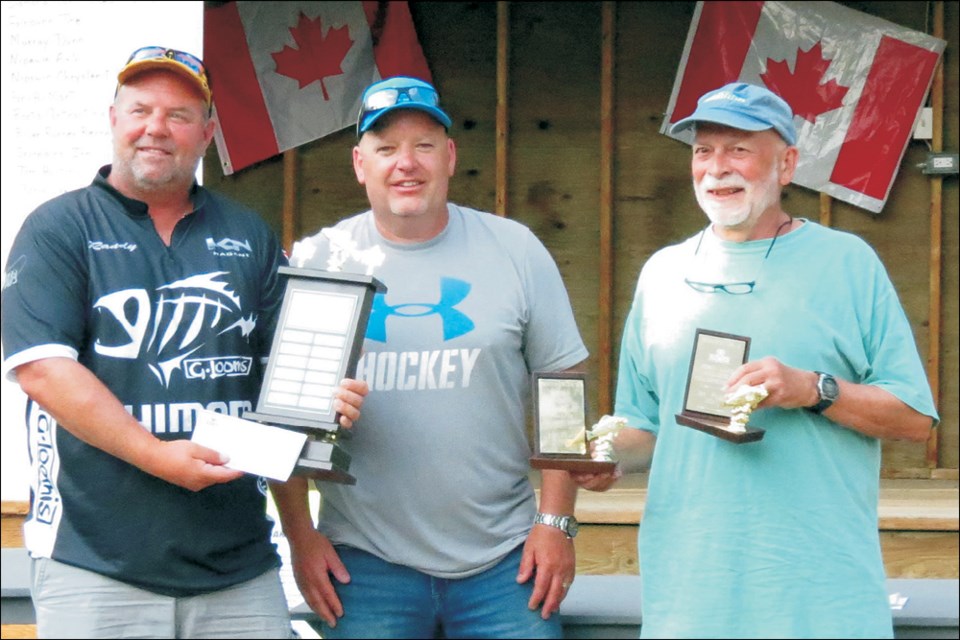Tobin Lake was full over the weekend with not just of fish, but fishers as well.
The Nipawin Hawks hosted their seventh annual Tobin Lake Walleye Championship, July 7-9.
The tournament sold out, bringing 80 teams and 160 fishers, marking a new high for the tournament. Fishers come from all over, including the United States, Alberta, and Saskatchewan.
Included in the 80 teams were approximately 12 mixed teams, and six junior squads.
Seeing so many people come out and support the team means a lot, said Dennis Botterill, an organizing committee member, who notes the tournament has gone from 16 teams when it started to 35, and then 40, to last year having 70 and now 80 this year.
The tournament is a major fundraiser for the Hawks, but is also a fundraiser for the community of Tobin Lake with the Hawks donating some of the money raised back into Tobin Lake to help with their recreation facilities.
Approximately 400 fish were caught each day, said Botterill, with more than $35,000 in cash prizes available for the winners.
Fishers were allowed to measure up to five fish per day for each of the two days, with only one of the five fish being allowed to measure longer than 70 centimetres in length.
The big winners of the derby was the team made up of Randy Olson of Saskatoon and Jim Maillet of Bangor, Maine, who took home the top prize of $6,000 thanks to their fish measurements of 562.6 cm and also pocketed the $11,340 top prize in the bonus tournament.
The second place winner in both the regular and buy in competitions was the team of Steve Brasseur and Mike Brasseur, who took home $3,200 thanks to a total measurement of 545.8 cm, and added $2,835 in the bonus tournament for the same measurements.
Rounding out the top three was the team of Blaine Whyte and Scott Jennings, who finished third in both competitions, pocketing $2,000 thanks to their total measurement of 542.8 cm and added $1,890 in the bonus tournament.
This year’s tournament featured a change compared to previous years as they made the switch from a weight based tournament where fishers were required to drive back to shore to have their fish weighed to a measurement based tournament where they could drive to a measurement boat on the water saving both time and gas for the fishers.
Botterill noted the change was also done as a way to lower the mortality rate of the fish.
“We were just totally amazed, our mortality rate was probably not even one per cent, whereas it was pushing over 10 before.”
A number of volunteers lent a helping hand to the tournament, with Botterill saying there were at least 50 people who helped out, which was great to see.
“You couldn’t do it without them. This was not done by me... It takes a whole pile of people to put it all together and there’s so many things to be done.”
In addition to having a number of volunteers, the derby also featured a number of sponsors, which was “incredible”, noted Botterill.
“We didn’t have to beg for stuff.”
Overall, Botterill was pleased with how the whole weekend went, noting it was a huge success.
“I don’t think there was much negativity at all.”
Looking ahead, Botterill said they will be having meetings in the coming weeks to recap how this year’s competition went, and says planning for next year will be getting started in the coming months.




